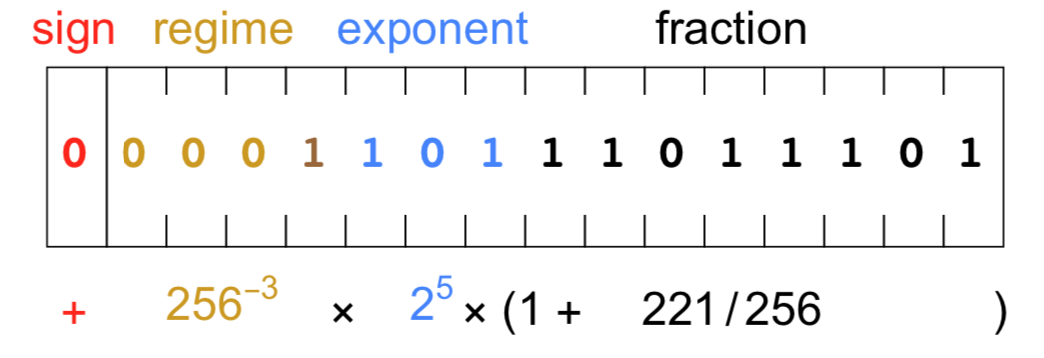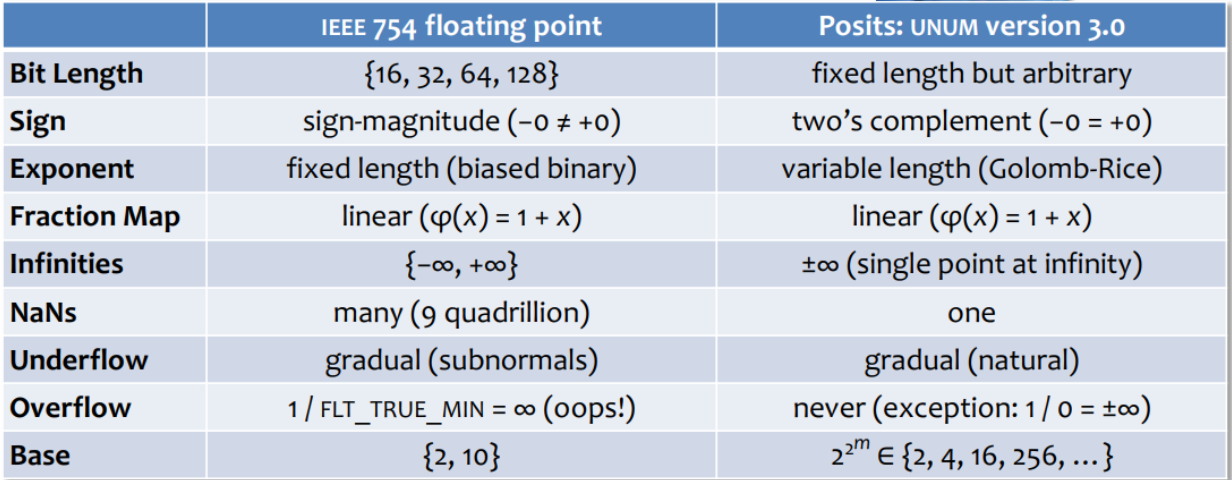Gliush Notebook
Notes about IT, work, and life
Notes for episode-0251
New approach could sink floating point computation (Posits)
https://www.nextplatform.com/2019/07/08/new-approach-could-sink-floating-point-computation/
- float was designed in 1985 by IEEE.
- Performance and accuracy is not the best
- John Gustafson reworked the “float” idea (his 3d iteration) -> Posits
- Difference: denser representation of real numbers.
- Instead of fixed-size exponent and mantissa -> variadic representation
- Additional “regime” part, of ANY length

- Coded as “total number of bits + max number of bits for exponent”:
posit< bits, es > - Priority: sign -> regime -> exponent (up to es bits, =0 if no bits available) -> fraction (=1.0 if no bits available)
- Advantages:
- +∞ = -∞
- only one NAN (1/∞)
- Higher precision (32bit posits can replace 64bit float in almost all use cases!)
- Higher performance

- IMHO
- Seems to be a better variant then IEEE float from 1985
- Not sure that it can’t be improved
- Very difficult to support in hardware -> I’d RFC it first